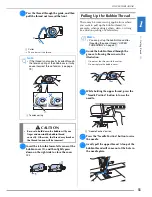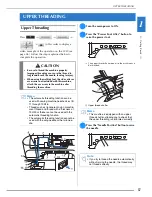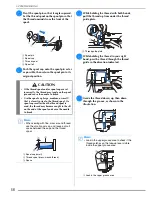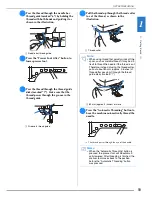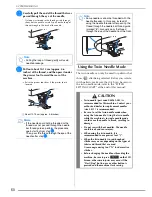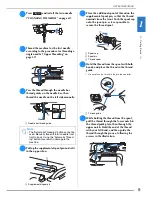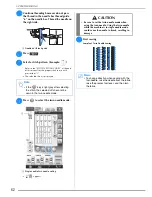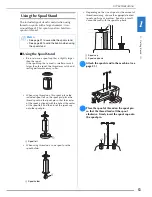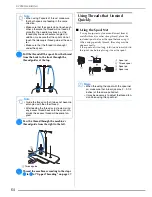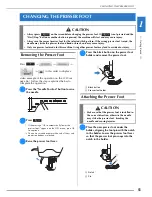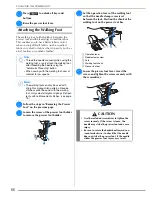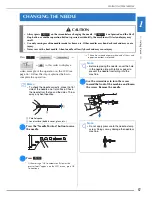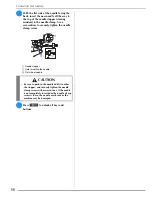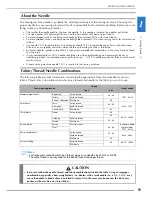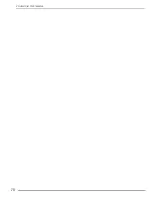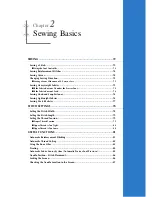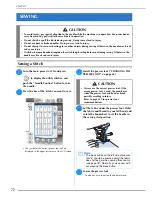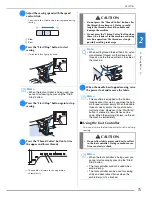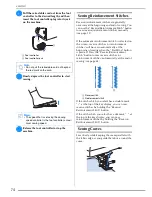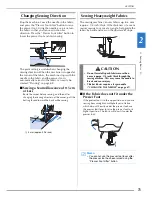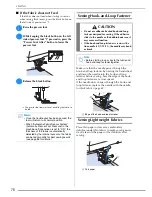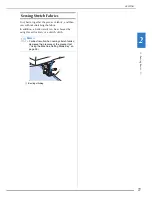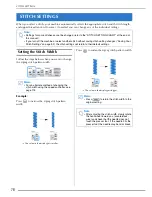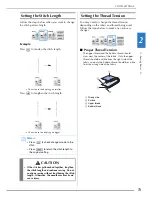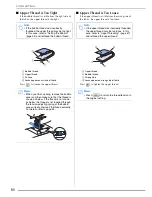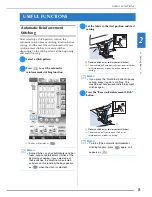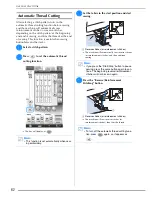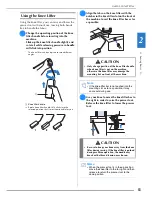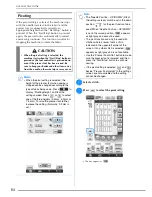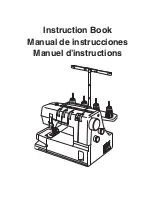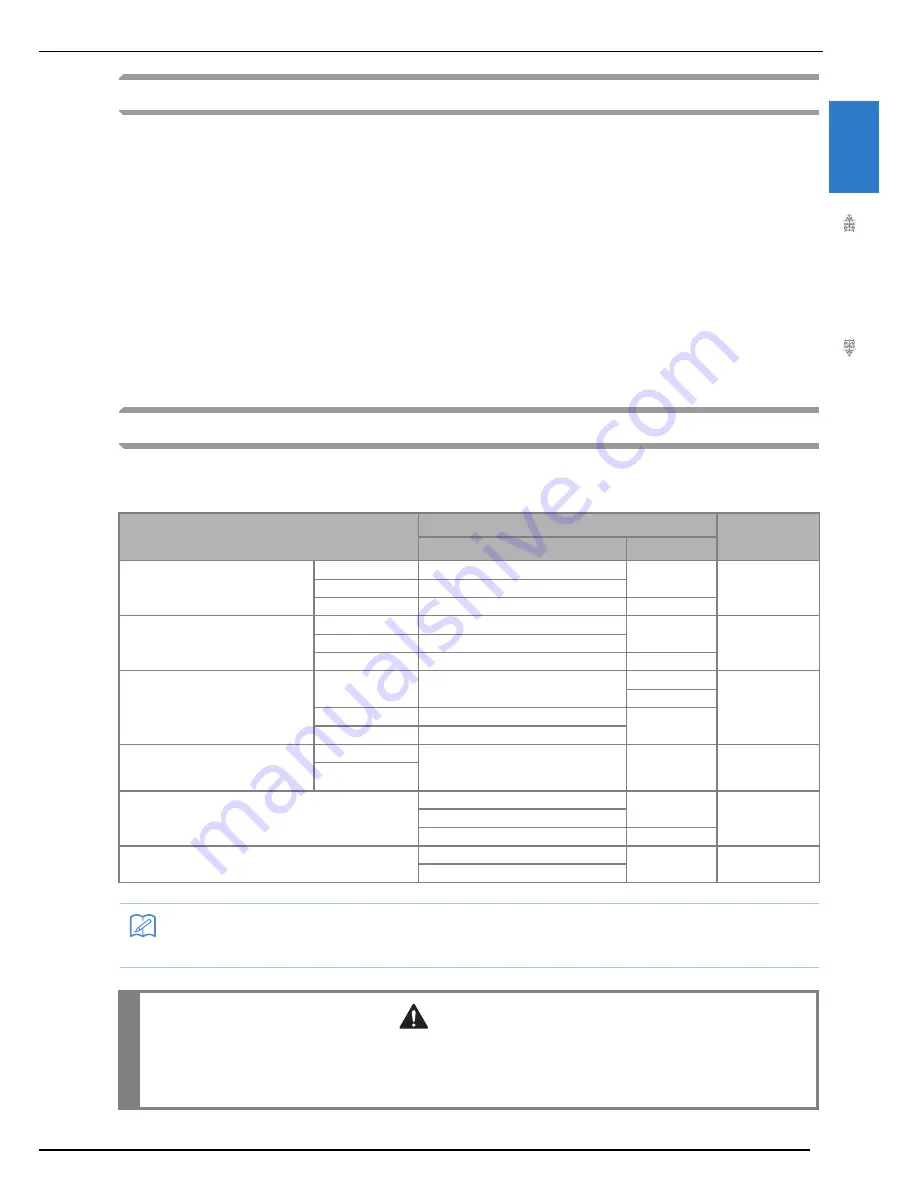
CHANGING THE NEEDLE
G
etting
Re
ad
y
69
1
About the Needle
The sewing machine needle is probably the most important part of the sewing machine. Choosing the
proper needle for your sewing project will result in a beautiful finish and fewer problems. Below are some
things to keep in mind about needles.
• The smaller the needle number, the finer the needle. As the numbers increase, the needles get thicker.
• Use fine needles with lightweight fabrics, and thicker needles with heavyweight fabrics.
• To avoid skipped stitches, use ball point needle (golden colored) 90/14 with stretch fabrics.
• To avoid skipped stitches, use ball point needle (golden colored) 90/14 when sewing character or decorative
stitches.
• Use needle 75/11 for embroidery. Use ball point needle 75/11 for embroidering patterns with short jump
stitches such as alphabet characters when the thread trimming function is turned on.
• Ball point needles (golden colored) 90/14 are not recommended for embroidery, as they may bend or break,
causing injury.
• It is recommended that a 90/14 needle should be used when embroidering on heavyweight fabrics or
stabilizing products (for example, denim, puffy foam, etc.). A 75/11 needle may bend or break, which could
result in injury.
• A home sewing machine needle 75/11 is inserted in the sewing machine.
Fabric/Thread/Needle Combinations
The following table provides information concerning the appropriate thread and needle for various
fabrics. Please refer to this table when selecting a thread and needle for the fabric you wish to use.
Fabric type/Application
Thread
Size of needle
Type
Size
Medium weight fabrics
Broadcloth
Cotton thread
60 - 90
75/11 - 90/14
Taffeta
Synthetic thread
Flannel, Gabardine Silk thread
50
Thin fabrics
Lawn
Cotton thread
60 - 90
65/9 - 75/11
Georgette
Synthetic thread
Challis, Satin
Silk thread
50
Thick fabrics
Denim
Cotton thread
30
90/14 - 100/16
50
Corduroy
Synthetic thread
50 - 60
Tweed
Silk thread
Stretch fabrics
Jersey
Thread for knits
50 - 60
Ball point needle
(gold colored)
75/11 - 90/14
Tricot
Easily frayed fabrics
Cotton thread
50 - 90
65/9 - 90/14
Synthetic thread
Silk thread
50
For top-stitching
Synthetic thread
50
90/14 - 100/16
Silk thread
Memo
• For transparent monofilament nylon thread, always use needle sizes 90/14 or 100/16.
The same thread is usually used for the bobbin thread and upper thread.
CAUTION
• Be sure to follow the needle, thread, and fabric combinations listed in the table. Using an improper
combination, especially a heavyweight fabric (i.e., denim) with a small needle (i.e., 65/9 - 75/11), may
cause the needle to bend or break, and lead to injury. Also, the seam may be uneven, the fabric may
pucker, or the machine may skip stitches.
Содержание 882-W04
Страница 7: ...IMPORTANT SAFETY INSTRUCTIONS 5 ...
Страница 72: ...CHANGING THE NEEDLE 70 ...
Страница 90: ...USEFUL FUNCTIONS 88 ...
Страница 186: ...USING THE MEMORY FUNCTION 184 ...
Страница 326: ...TROUBLESHOOTING 324 ...
Страница 335: ...ENTERING STITCH DATA 333 MY CUSTOM STITCH 8 A new point is entered and moves to it c Use to move the point ...
Страница 338: ...USING STORED CUSTOM STITCHES 336 ...
Страница 373: ......
Страница 374: ......
Страница 375: ......
Страница 376: ...English 882 W04 W05 XF0228 0011 Printed in Taiwan ...

